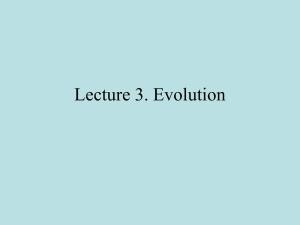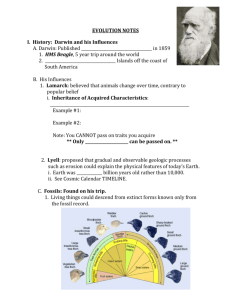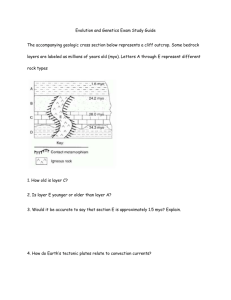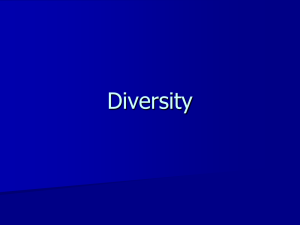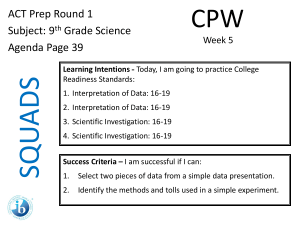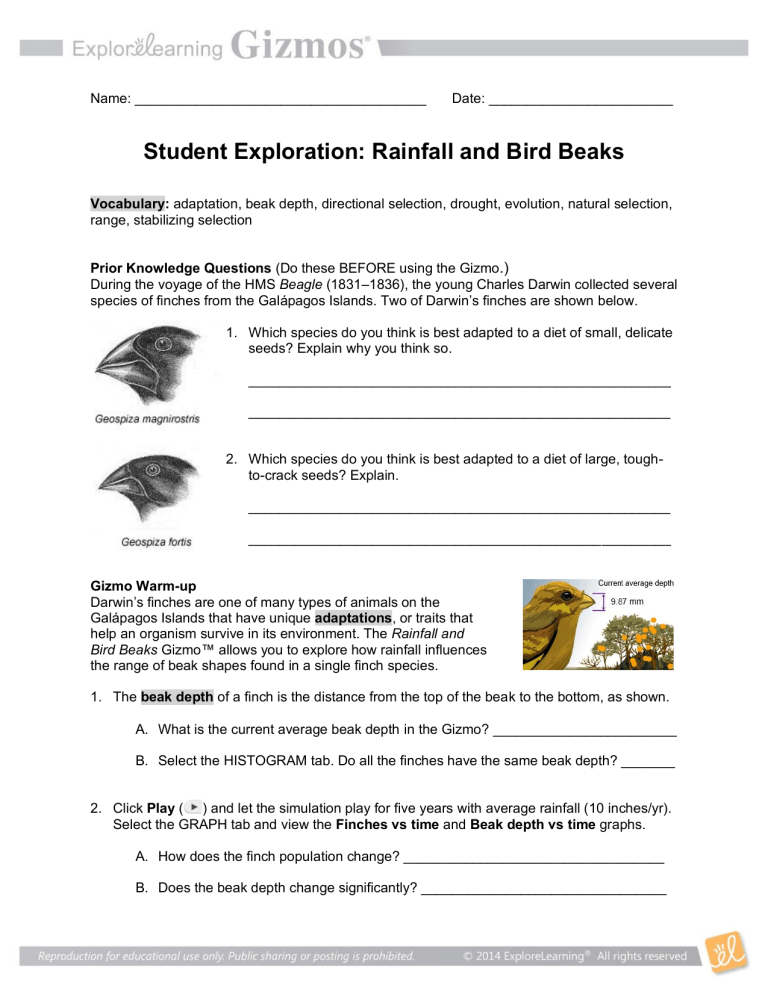
Name: ______________________________________ Date: ________________________ Student Exploration: Rainfall and Bird Beaks Vocabulary: adaptation, beak depth, directional selection, drought, evolution, natural selection, range, stabilizing selection Prior Knowledge Questions (Do these BEFORE using the Gizmo.) During the voyage of the HMS Beagle (1831–1836), the young Charles Darwin collected several species of finches from the Galápagos Islands. Two of Darwin’s finches are shown below. 1. Which species do you think is best adapted to a diet of small, delicate seeds? Explain why you think so. _______________________________________________________ _______________________________________________________ 2. Which species do you think is best adapted to a diet of large, toughto-crack seeds? Explain. _______________________________________________________ _______________________________________________________ Gizmo Warm-up Darwin’s finches are one of many types of animals on the Galápagos Islands that have unique adaptations, or traits that help an organism survive in its environment. The Rainfall and Bird Beaks Gizmo™ allows you to explore how rainfall influences the range of beak shapes found in a single finch species. 1. The beak depth of a finch is the distance from the top of the beak to the bottom, as shown. A. What is the current average beak depth in the Gizmo? ________________________ B. Select the HISTOGRAM tab. Do all the finches have the same beak depth? _______ 2. Click Play ( ) and let the simulation play for five years with average rainfall (10 inches/yr). Select the GRAPH tab and view the Finches vs time and Beak depth vs time graphs. A. How does the finch population change? __________________________________ B. Does the beak depth change significantly? ________________________________ Activity A: Normal years Get the Gizmo ready: • Click Reset ( ). Introduction: The Galápagos Islands are very dry, with an average rainfall on some islands of only five inches per year. The amount of rainfall has a large impact on the abundance and types of seeds that are available to be eaten by finches. In the process of natural selection, only the finches that are best adapted to the available seed types survive and have offspring. Question: How is the finch population affected by a period of average rainfall? 1. Observe: With the Rain sliders set to 10 inches, click Play, and then Pause ( ) after one year has passed. Select the TABLE tab and look at the Month and Finches columns. A. How did the finch population change over the course of one year? ______________ ___________________________________________________________________ B. The finches have their young during the rainy season. Based on the table, which part of the year do you think is the rainy season? _______________________________ 2. Analyze: Click Reset, and choose the HISTOGRAM tab. The bars represent the numbers of finches that have different beak depths. The range of beak depths is equal to the difference between the largest and smallest beaks. A. What is the average beak depth of the current finch population? ________________ B. What is the range in beak depths in the population? __________________________ C. Do most of the finches have beak depths near the lower extreme, the middle, or the higher extreme of the range? ____________________________________________ 3. Experiment: Click Play, and observe the histogram as the simulation plays for five years. A. What is the average beak depth now? ____________________________________ B. What is the current range of beak depths? _________________________________ C. Based on what you have seen, are finches with very small, medium, or very large beaks most likely to survive in times of normal rainfall? Justify your answer. ___________________________________________________________________ ___________________________________________________________________ ___________________________________________________________________ Activity B: Drought Get the Gizmo ready: • Click Reset. Introduction: In years of extreme drought, Galápagos plants don’t produce new seeds. The small, delicate seeds get eaten up quickly, leaving behind only the largest, toughest seeds. Question: How does drought affect the finch population and average beak depth? 1. Form hypothesis: What type of beak do you think will be best for finding food in a drought? _________________________________________________________________________ 2. Predict: Select the HISTOGRAM tab. On the left side below, sketch the current histogram and list the average beak depth and range of beak depths. On the right side, sketch what you think the histogram will look like after five years of drought. Explain your prediction. Initial beak depths Beak depths after 5 years (predicted) Initial number of finches: ___________ Explanation: ________________________ Initial average depth: _________ ___________________________________ Initial range of beak depths: _________ ___________________________________ 3. Experiment: Use the sliders to set the Rain to 2 inches for each of the five years in the simulation. Click Play, and wait for five years. Observe the beak of the finch. A. How does the beak depth change over time? _______________________________ B. What is the final average beak depth? ____________________________________ C. What is the final range of beak depths? ___________________________________ (Activity B continued on next page) Activity B (continued from previous page) 4. Describe: Compare the final histogram to the initial histogram. How have the finches been affected by drought? Describe at least two changes that you notice. _________________________________________________________________________ _________________________________________________________________________ 5. Analyze: Was the increase in the average beak depth caused by an increase in largebeaked finches or a decline in small-beaked finches? Explain your answer. _________________________________________________________________________ _________________________________________________________________________ _________________________________________________________________________ 6. Draw conclusions: What do you think caused the changes in the finch population and average beak size during the drought? _________________________________________________________________________ _________________________________________________________________________ _________________________________________________________________________ 7. Interpret: Directional selection occurs when individuals at one end of a range are more likely to survive than intermediate individuals or individuals at the opposite end of the range. Stabilizing selection occurs when intermediate individuals are the most likely to survive. Is directional selection, stabilizing selection, or both operating in this example? Explain. _________________________________________________________________________ _________________________________________________________________________ _________________________________________________________________________ 8. Think and discuss: Evolution is the process by which populations of organisms can change over time. How is directional selection related to evolution? _________________________________________________________________________ _________________________________________________________________________ _________________________________________________________________________
